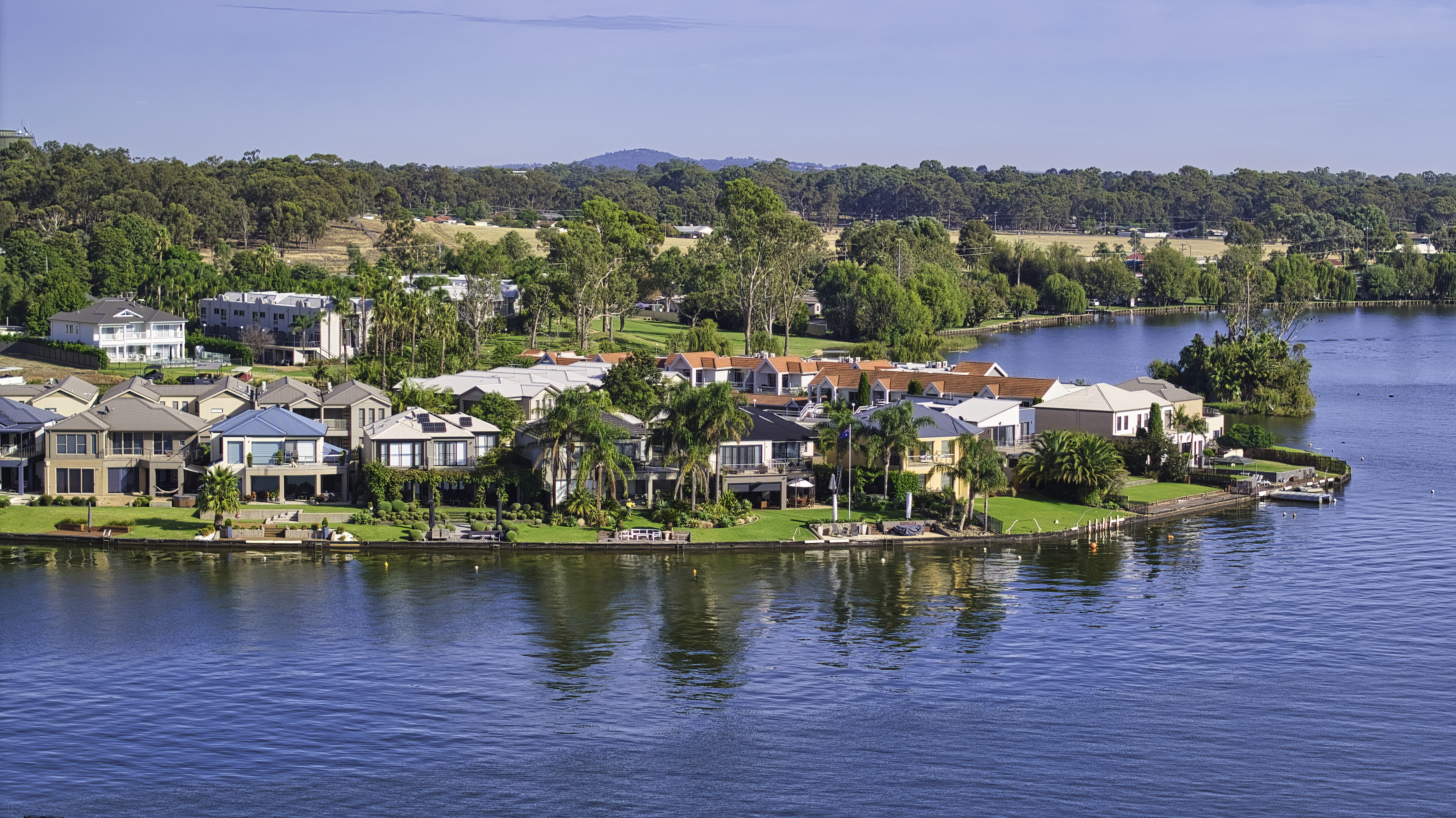Features > Property News & Insights > Housing Trends
“Impossibly unaffordable” home prices set to continue

KEY POINTS
- Sydney has the second-least affordable housing costs, only behind densely populated Hong Kong, according to an international comparison of 94 cities
- The Demographia International Housing Affordability Report for 2024 finds Australia’s five biggest cities all have severely unaffordable housing
- Sydney, Melbourne and Adelaide are categorised as “impossibly unaffordable”
- The Demographia report suggests planning policies that restrict urban “sprawl” in cities are to blame for rapidly escalating housing costs
An international study says housing in Australia’s five biggest cities is severely unaffordable, with Sydney, Melbourne and Adelaide branded “impossibly unaffordable.”
The latest Demographia International Housing Affordability report confirms what many Australians already know—housing is incredibly expensive in Australia and is unlikely to get cheaper any time soon.
Sydney is the second least affordable city in the world for housing, second only to the Chinese territory of Hong Kong, according to the annual survey compiled by Chapman University in California, the right-wing Canadian Think Tank the Frontier Centre for Public Policy, and US-based urban consultants Demographia.
Melbourne is in seventh place, and Adelaide, where housing affordability has deteriorated sharply over the last five years, is in eighth, tied with San Francisco.
Methodology.jpg?width=13889&height=15486&name=APU_Table_June17_Top15jpg%20(1).jpg)
The Demographia International Housing Affordability Report rates middle-income housing affordability in 94 major cities in eight nations: Australia, Canada, China, Ireland, New Zealand, Singapore, the United Kingdom, and the United States.
To arrive at the “affordability” measure, report author Wendell Cox uses a median multiple measure—a price-to-income ratio of the median house price in a particular city, divided by the gross median household income of that city.
“In a well-functioning market,” he says, “median-priced houses should be affordable to middle-income households, as they were in virtually all markets before the inception of more restrictive land use policies, especially urban containment.”
For background, Wendell Cox is a conservative US urban policy specialist who is generally against the densification of cities.
If you read between the lines of his report, he gives the impression of wanting to be able to step back in a time machine to about 1990, when the average cost of a home in most of the cities he looks at had a median multiple of 3.0.
In other words, the median dwelling cost was about three times the median gross household income in that city.
Things have certainly changed since then, with Sydney scoring a median multiple of 13.8 in 2024, Melbourne 9.8 and Adelaide 9.7.
Cox deems anything over a multiple of 9.0 as being “impossibly unaffordable”.
Brisbane is tied for 12th most unaffordable city with London and Miami with median multiples of 8.1 while booming Perth comes in at 15th, tied with Boston at 6.8.
“Australian markets have a median multiple of 9.7, having deteriorated from 6.9 in 2019,” Wendell Cox says.
“This represents an increase of 2.8 years of median household income, in just three years.
“All five of Australia’s major housing markets have been severely unaffordable since the early 2000s or before.”
Demographia’s solution
The Demographia report says the current cost-of-living crisis currently gripping Australia and other similar high-income nations has primarily been caused because “middle-income households face rapidly escalating housing costs.”
“For decades, home prices generally rose at about the same rate as income, and homeownership became more widespread.
“But affordability is disappearing in high-income nations as housing costs now far outpace income growth.
“The crisis stems principally from land use policies that artificially restrict housing supply, driving up land prices and making homeownership unattainable for many,” Wendell Cox writes.
Cox’s solution is to relax so-called “urban containment policies” aimed at limiting sprawl and increasing density.
“While well-intentioned, these policies severely constrict the land available for housing.
“In constrained markets, higher land values translate to dramatically higher house prices.”
In the real world…
With Australian governments of all persuasions agreeing on the need for MORE urban densification, not LESS, don’t expect housing affordability on Demographia’s annual scale to improve anytime soon.
The simple fact is that governments are not willing to accept endless housing development on the fringes of our cities.
The reason is simple.
The cost of government-provided infrastructure (roads, schools, local amenities, power, water and sewerage) in greenfield areas is four times higher than expansion and upgrades to infrastructure in established areas.
Cash-strapped state and territory governments simply can’t afford it.
That’s why you are seeing states like New South Wales and Victoria rolling out ambitious new housing targets, with council areas close to urban centres earmarked to carry the bulk of the new housing load.
The only feasible way housing affordability will improve in Australia is if we build enough homes each year to house our growing population, which simply is not the case at the moment and is hard to see happening in the foreseeable future.
Stay Up to Date
with the Latest Australian Property News, Insights & Education.




.png?width=292&height=292&name=Copy%20Link%20(1).png)
 SIGN UP FOR FREE NEWSLETTER
SIGN UP FOR FREE NEWSLETTER








.jpg?width=1920&height=1080&name=Warning%2c%20You%20Might%20Be%20Facing%20Higher%20Taxes%20Soon%20(1).jpg)





.png?width=1920&height=1080&name=Rate%20Drops%20Signal%20BIGGEST%20Property%20Boom%20in%20DECADES%20(1).png)

.jpg?width=1920&height=1080&name=Labor%20vs%20Liberal%20These%20Housing%20Policies%20Could%20Change%20the%20Property%20Market%20Forever%20(1).jpg)
.jpg?width=1920&height=1080&name=QLD%20Slashes%20Stamp%20Duty%20Big%20News%20for%20Investors%20%26%20Home%20Buyers%20(1).jpg)
.jpg?width=1920&height=1080&name=Trump%20Just%20Slapped%20Tariffs%20%E2%80%93%20Here%E2%80%99s%20What%20It%20Means%20for%20Australia%20(1).jpg)
.jpg?width=1920&height=1080&name=Federal%20Budget%202025%20More%20Debt%2c%20No%20Housing%20%E2%80%93%20Here%E2%80%99s%20What%20You%20Need%20to%20Know%20(1).jpg)
.jpg?width=1920&height=1080&name=Australias%20Housing%20Crisis%20is%20about%20to%20get%20MUCH%20Worse%20(New%20Data%20Warns).jpg)
%20(1).jpg?width=1920&height=1080&name=Australias%20RENTAL%20CRISIS%20Hits%20ROCK%20BOTTOM!%20(2025%20Update)%20(1).jpg)
%20(1).png?width=1920&height=1080&name=Is%20Adelaide%20Still%20a%20Good%20Property%20Investment%20(2025%20UPDATE)%20(1).png)
.jpg?width=1920&height=1080&name=RBA%20Shocks%20with%20Rate%20Cuts!%20What%E2%80%99s%20Next%20for%20Property%20Investors%20(1).jpg)
%20(1).jpg?width=1920&height=1080&name=I%20Predict%20The%20Feb%20Rate%20Cut%20(My%20Price%20Growth%20Prediction)%20(1).jpg)
.png?width=1920&height=1080&name=Why%20Property%20Prices%20Will%20Rise%20in%202025%20Market%20Predictions%20(1).png)
.jpg?width=1920&height=1080&name=Why%20Investors%20Are%20Choosing%20Apartments%20Over%20Houses%202%20(1).jpg)
.jpg?width=1920&height=1080&name=Why%20Rate%20Cuts%20Will%20Trigger%20A%20Property%20Boom%20(1).jpg)
.jpg?width=1920&height=1080&name=Retire%20On%202Million%20With%20One%20Property%20(Using%20SMSF).jpg)
.jpg?width=1920&height=1080&name=4%20Reasons%20Why%20You%20Should%20Invest%20in%20Melbourne%20Now%20(1).jpg)
%20(1).jpg?width=1920&height=1080&name=Old%20Property%20vs%20New%20Property%20(Facts%20and%20Figures%20Revealed)%20(1).jpg)
%20(1).jpg?width=1920&height=1080&name=Will%20The%20New%20QLD%20Govt%20Create%20a%20Property%20Boom%20or%20Bust%20(My%20Prediction)%20(1).jpg)
%20Scott%20Kuru%20(1).jpg?width=1920&height=1080&name=Inflation%20Hits%20Three-Year%20Low%20(Will%20RBA%20Cut%20Rates%20Soon)%20Scott%20Kuru%20(1).jpg)
.jpg?width=1920&height=1080&name=How%20to%20Buy%20Investment%20Property%20Through%20SMSF_%20The%20Ultimate%20Guide%20(1).jpg)
.jpg?width=1920&height=1080&name=Victoria%20Slashes%20Stamp%20Duty%20Melbourne%20Set%20to%20Boom%20Scott%20Kuru%20(1).jpg)
.png?width=1571&height=861&name=Are%20Foreign%20Buyers%20Really%20Driving%20Up%20Australian%20Property%20Prices%20(1).png)
.jpg?width=1920&height=1080&name=The%20Single%20Factor%20That%20Predicts%20Property%20Growth%20Regions%20(1).jpg)
%20Scott%20Kuru%20(1).jpg?width=1920&height=1080&name=My%20Prediction%20On%20Rates%20%26%20Negative%20Gearing%20(Market%20Crash)%20Scott%20Kuru%20(1).jpg)

-1.png?width=1920&height=1080&name=Major%20Banks%20Cut%20Rates%20Will%20RBA%20Follow%20Suit%20(Sept%20Rate%20Update)-1.png)
%20Scott%20Kuru-1.png?width=1920&height=1080&name=Rate%20Cut%20Coming%20What%20New%20Zealands%20Move%20Means%20for%20Australia%20(Sept%20Prediction)%20Scott%20Kuru-1.png)
%20(1).jpg?width=1920&height=1080&name=Buy%20when%20the%20interest%20rates%20are%20high!%20(Why%20you%20must%20buy%20now!)%20(1).jpg)
.jpg?width=1920&height=1080&name=Carms_Revised%20Taxes%20Due%20Aug%209%20YT%20Thumbnail02%20(1).jpg)
.jpg?width=1920&height=1080&name=Carms_Too%20Little%20Too%20Late%20Aug%207%20YT%20Thumbnail01%20(1).jpg)









.jpg?width=1920&height=1080&name=Carms_Rate%20Drop%20In%20July%20Jun%2010%20YT%20Thumbnail02%20(1).jpg)
.jpg?width=1920&height=1080&name=Carms_Own%20a%20Property%20V6%20Jun%205_YT%20Thumbnail%20(1).jpg)









.png?width=1920&height=1080&name=Artboard%201%20(3).png)






.jpg?width=1920&height=1080&name=YT%20thumbnail%20%20(1).jpg)

